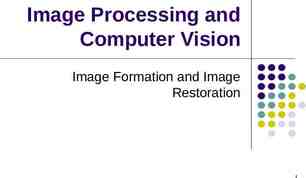“College and Career Readiness” for Students with the Most
23 Slides1.66 MB
“College and Career Readiness” for Students with the Most Significant Cognitive Disabilities June 2014 1
Parent Resources
NCSC Discussion of College and Career Readiness for Students with Significant Cognitive Disabilities Discusses the relevance and importance of “college and career readiness” (CCR) for students with significant cognitive disabilities (which NCSC defines to include community readiness) Demonstrates that typical CCR skills are related to critical skills for success and independence in the community Addresses the role played by communicative competence with respect to CCR and safety in the community
NCSC Summary of Policy Paper on College and Career Readiness for Students with Significant Cognitive Disabilities Reviews findings from a paper by the National Alternate Assessment Center on CCR for students with significant cognitive disabilities http://www.naacpartners.org Describes the NCSC framework of assessment, curriculum and instruction and how it relates to CCR Describes additional elements of CCR that can’t be measured by assessment, but should be addressed by IEP teams Original NCSC research paper and the summary are posted at http://www.ncscpartners.org/resources
Parent Resources Additional materials designed to help inform parents about NCSC’s work and related issues can be found at http:// www.ncscpartners.org/resources Other topics are: – – – – – A summary of the project The NCSC assessment The NCSC curriculum/ instructional resources Communicative competence Research on instruction/ assessment of students with significant cognitive disabilities 5
Background Information
NCSC Background In 2010, the U.S. Department of Education awarded the National Center and State Collaborative (NCSC) a grant to develop a new alternate assessment on alternate academic achievement standards (AA-AAS) in math and English Language Arts by the 2014-15 school year* 24 states and five national organizations are working together in NCSC http ://www.ncscpartners.org NCSC is also developing curriculum/instructional resources based on Common Core State Standards (CCSS) that can be used in any state https:// wiki.ncscpartners.org * states may have different implementation timelines for NCSC assessment 7
Common Core State Standards (CCSS) Define what students are expected to know and do for each grade level in math and English language arts (ELA) Focus on what is most essential, not all that can or should be taught or “how” to teach Are linked to expectations for college and career success Most states have adopted the CCSS and must provide instruction and assessments for ALL students based on these standards. The other states have similar college and career ready standards and related 8
9 NCSC’s Value in States Without CCSS The main focus of any set of academic standards addresses similar content in math and ELA (e.g. equations, elements of fiction) The NCSC resources are not meant to “be” the curriculum – they are models of curriculum and instructional resources that happen to be based on the CCSS These models also demonstrate how to develop curriculum and instructional resources based on whatever standards a state is using The richness of the NCSC resources for students with significant cognitive disabilities and their usefulness for professional development are valuable in any state
Career College Community Curriculum Common Standards Learning Progressions Core Content Connectors Instruction Assessment Grade-level Lessons Accommodations Systematic Instruction (carefully planned sequence for instruction) Formative (ongoing during school year, monitors learning) Summative (end of year or course, evaluates learning) 10 Communicative Competence NCSC Framework for Assessment and Curriculum/Instructional Materials
NCSC Framework for Assessments, Curriculum and Instruction College and career readiness in the NCSC model also includes community readiness NCSC approach is to build assessments as a component of a broader system in which curriculum, instruction and assessments are closely linked NCSC has developed curriculum/instructional resources for teachers The framework is built on a foundation of communicative competence, so students have a reliable way to receive information from others and to show others what they know
College and Career Readiness
Increasing Numbers of Students with Intellectual Disabilities Are Going To College The Higher Education Opportunity Act (2008) includes two major provisions that may facilitate entry into higher education for students with an intellectual disability. – Implementation of model demonstration sites – Availability of financial aid if enrolled See www.thinkcollege.net for more information on the variety of programs that have been developed (many before 2008) 13
Postsecondary College Programs are About Opportunities Academic and instructional Employment/Career: Pathways to competitive employment Independent living/residential Social: An avenue for inclusion into one’s community 14
Cross walking College and Career Readiness All kids – Key Cognitive Strategies Problem solving, reasoning, analysis, interpretation, critical thinking – Key Content Reading, Math, Science, Social Studies – Academic Behaviors Self monitoring, time management, using information resources, social interaction skills, working in groups – Contextual Skills and Awareness Seeking help with admissions, procedures, career development » (Conley, 2007) Students with Significant Cognitive Disabilities – Academic Access – Career Development – Social Network – Self Determination – Integration with College Systems & Practices – Coordination and Collaboration 15
Which Skills Promote College and Career (and Community) Readiness? Communicative competence Social skills to function well in small groups Independent work behaviors Problem Solving Reading/writing/math Assistance seeking behaviors 16
Working towards College and Career Readiness in English Language Arts is Important for . Communicating with family, friends, support staff, medical personnel, co-workers, etc. Comparing information to make decisions (including voting) Self-determination and self-advocacy Traveling in the community Understanding books, movies, TV shows and songs Attending college Finding and maintaining employment 17
Working towards College and Career Readiness in Math is Important for Telling time Making and following a schedule Managing money Arranging and using transportation Taking medication Planning and making meals Shopping Attending college Finding and maintaining employment 18
Remember Functional skills can be taught as part of academic lessons The learning process itself results in benefits e.g. critical thinking and problem solving College and career ready skills are important for life in the community, regardless of a student’s post-school goals The least dangerous assumption -exposing students to learning is not harmful; however keeping them from it is 19
Importance of College and Career Ready Skills for Success in the Community Without college and career ready skills, students with significant cognitive disabilities will likely: need greater supports throughout their life live and work in more segregated environments have more difficulty finding/keeping employment have more difficulty learning about and engaging in community activities be easier to victimize
Additional Elements of College and Career Readiness Alternate assessments measure the academic knowledge and skills that students need for college and career readiness. However, there are other important elements of college and career readiness that should also be addressed by IEP teams. Research has found that these elements predict success after high school.
List of Additional Elements Self-determination skills-should be taught as part of academic lessons Student involvement in the IEP planning process- opportunities to practice selfdetermination skills should be maximized Community-based vocational (job) training and paid employment while in school (including after school and summer jobs) Community-based instruction-should include typical peers and should not take the place of general education classroom instruction
List of Additional Elements Inclusion in general education classes Social interaction skills and opportunities for peers support and friendship Knowledge of one’s own support needs Interagency transition collaboration-e.g. the school district and the adult services agencies working together to provide creative job development and on-going supports




























